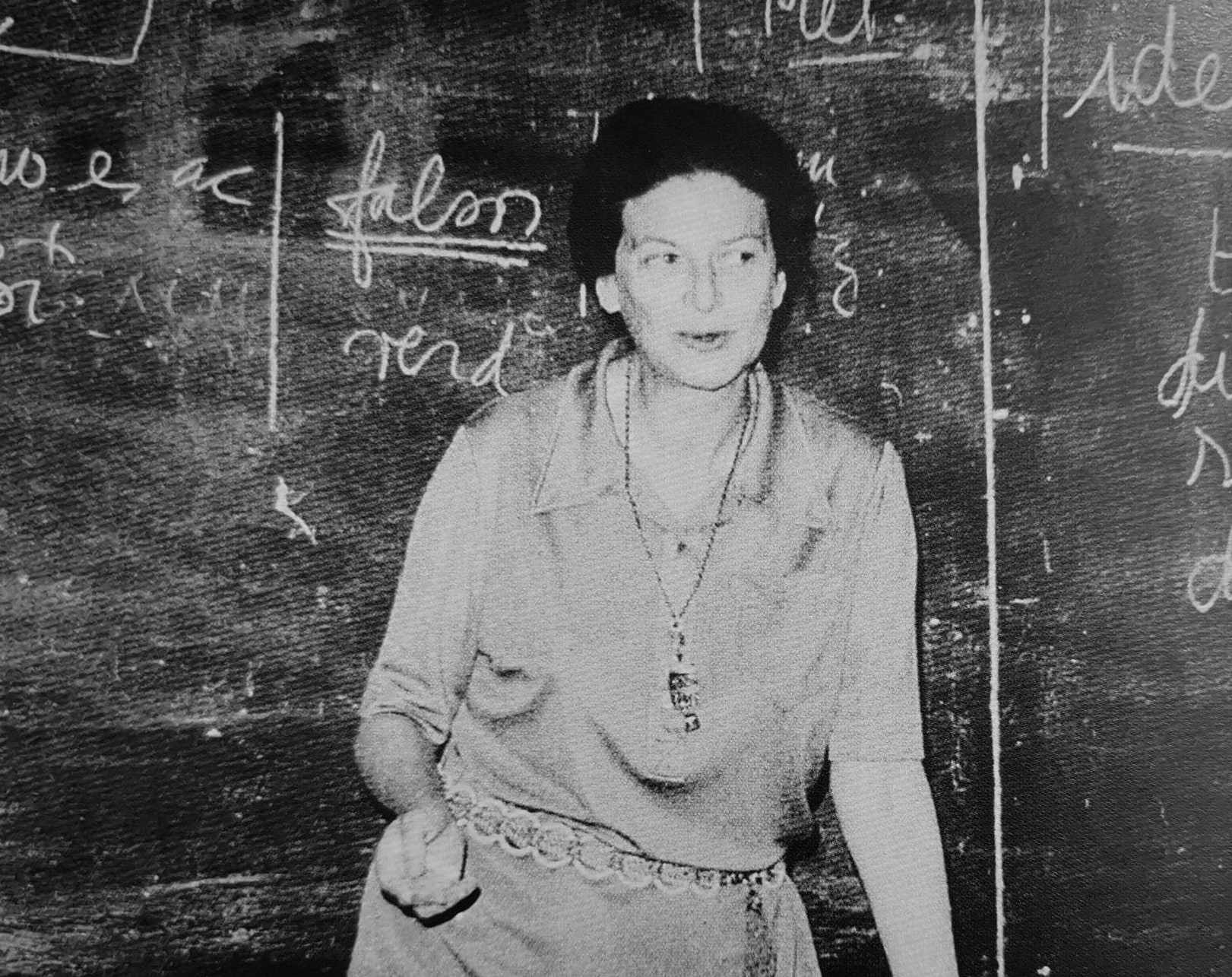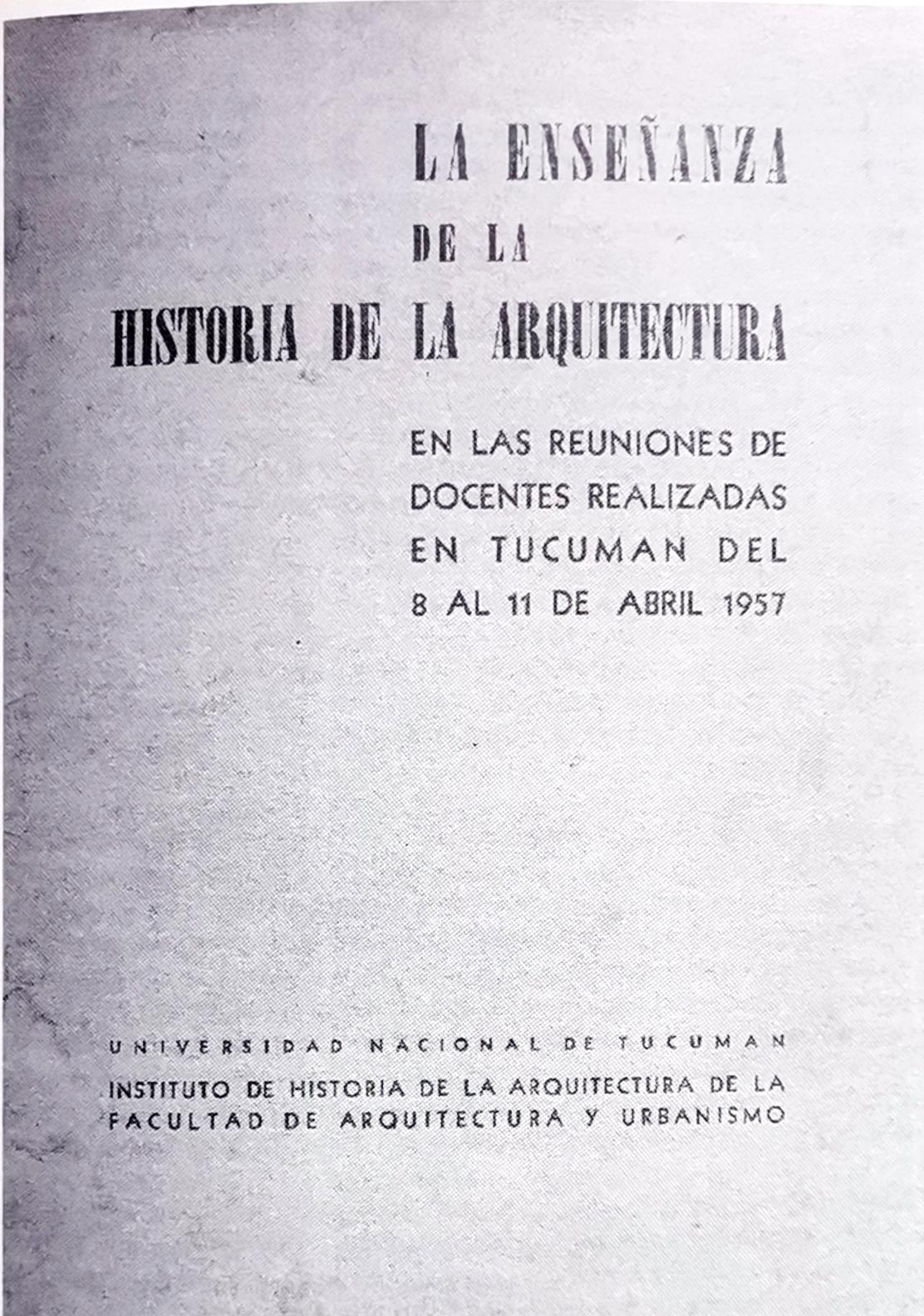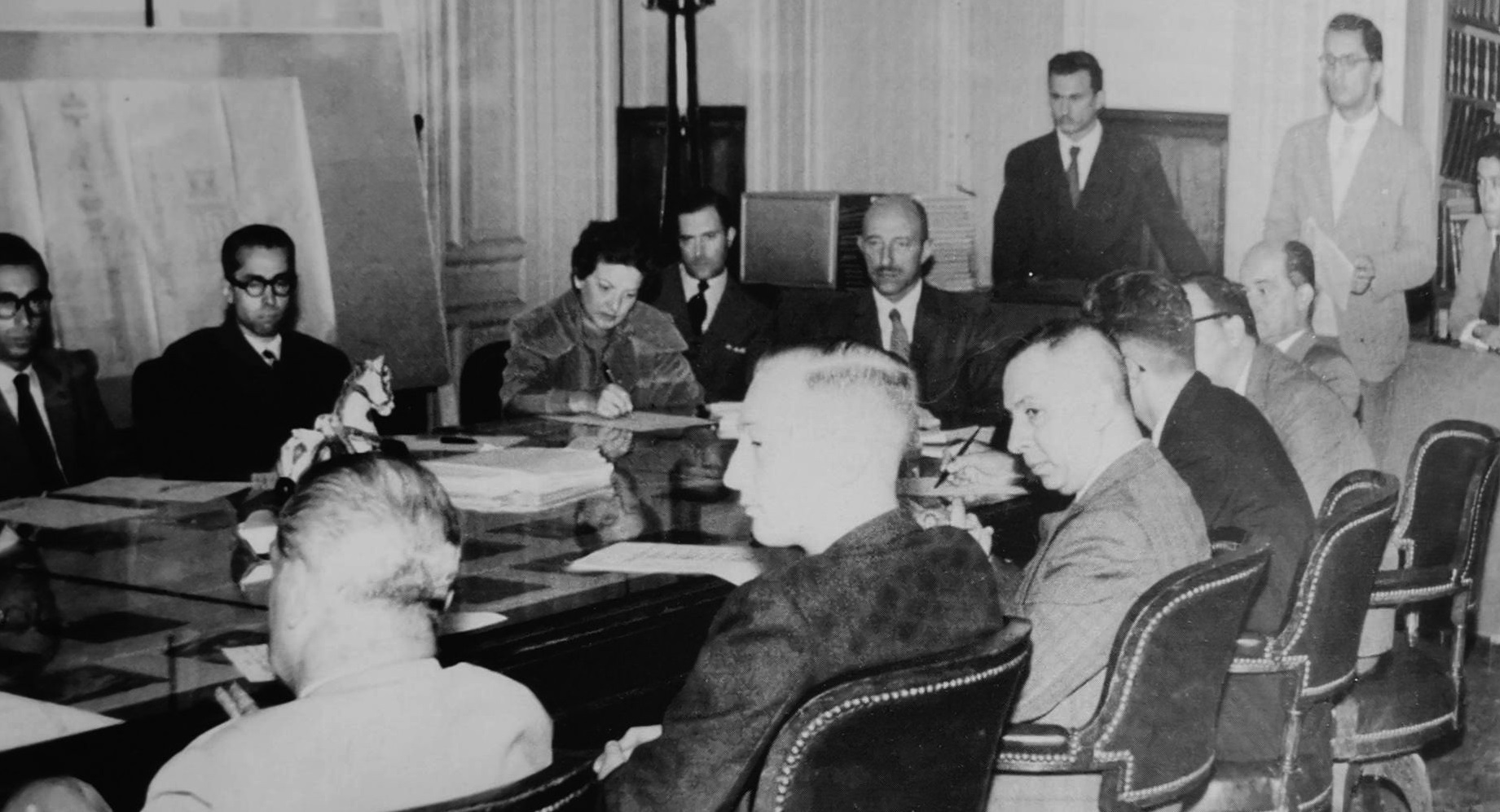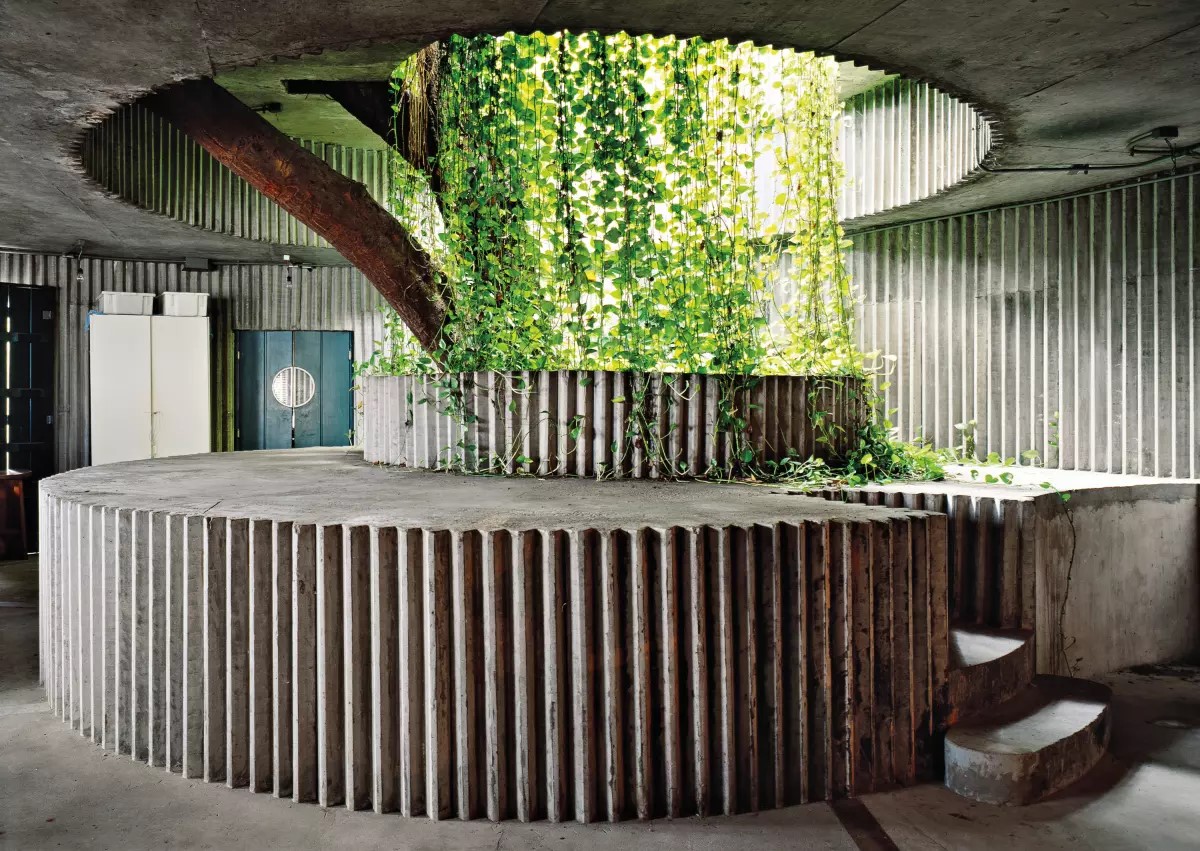«All this wasn’t achieved without effort. In general, women have a much more difficult start than men in the professional field, and breaking into a profession is sometimes very difficult. It is very often the case that women have to demonstrate an unquestionably greater ability than their male competitors in order to occupy any professional position. [...] A traditionalist family background, on the one hand, makes it psychologically difficult for her to adapt to the life struggles in a field that, according to these conditions, is reserved for men; while, on the other hand, it exerts continuous adverse pressures, whether expressed or not, through the family or social sphere. Many women have failed in this struggle.»1
Marina Waisman: Theory and Teaching
02/14/2024
by Inés Moisset
In her pioneering and innovative career, Marina Waisman intertwined teaching, research, and dissemination, understanding that these activities create a necessary synergy for the construction of a discipline situated in its time and context.

Marina Waisman (Buenos Aires, 1920 - Río Cuarto, 1997) is one of the most recognized architectural critics of the twentieth century. She reflected extensively on the relationship between the theory and the teaching of this discipline. Her extensive work at the various universities where she taught, was complemented by publications in books and journals that took her thinking beyond Argentina. She received numerous awards before her death in 1997. She was awarded the America Prize for her tireless critical work and transcendental contribution to Latin American architecture in 1987. She was a member of the National Academy of Fine Arts of Argentina. She is remembered by the extensive university community that shared different workspaces with her for her clarity in expressing ideas, her sense of humor, and her generosity and companionship.
Who Was Marina Waisman?
Marina Waisman—whose maiden name was Kitroser—graduated as an architect from the National University of Cordoba (Argentina) in 1945. It was a strongly masculine course at the time, so much so that she was the only woman in her class. Only two other women architects had graduated before her: Nélida Azpilicueta, in 1937, and Líbera Carmignani, in 1942. As she recounts in her 1969 article “La mujer en la arquitectura” [Women in Architecture], women began to join universities, public administration, and tendering teams around the 1960s, when the number of female students began to increase.
Waisman was extensively concerned about the modest heritage of the cities, both from her teachings as well as from a concrete activism. She resigned in 1970 as municipal advisor when, despite her firm opposition, they decided to demolish the house of painter Emiliano Gómez Clara, located where the square of the City Hall of Córdoba functions today.
She developed an intense activity in the Latin American Architecture Seminars (SAL) that began in 1985 in Buenos Aires. This group was a hub of discussions on the impact of the modern movement in our cities, the destruction of heritage, and ways of approaching these problems. Rogelio Salmona, Silvia Arango, Ruth Verde Zein and Enrique Browne, among other promoters of the discussion on the Latin American realities, converged here.
Her theoretical production was carried out mostly in collaboration, integrating teams, and understanding polyphony as an instance that surpassed individual observation. This leaning toward the collective also manifested in her participation in the formation of institutions that linked people interested in deepening architectural thinking, such as the Interuniversity Institute of Specialization in Architectural History (IIDEHA) in 1958, the Institute of Heritage Preservation of the Catholic University of Cordoba in 1975, and the Training Center for Researchers in History and Critique of Architecture of the National University of Cordoba, in 1995.
Producing Knowledge and Transmitting Knowledge
«Politics [...] is the search for the most appropriate ways to achieve the highest ends: [...] in universities, this would be the best quality of teaching, the possibility of developing research, the possibility of producing knowledge, not merely transmitting it.»
2
Waisman began teaching at the same university where she studied in 1948, where she created the first Chair of Contemporary Architecture, which she taught until 1971. Between 1956 and 1959, she lectured at the National University of Tucumán. Together with a relevant nucleus that articulated professors from all Argentine universities, she created the IIDEHA, participating in the organization of seminars where outstanding specialists of the time converged: Umberto Eco, Vincent Scully, Fernando Chueca Goitía, Giulio Carlo Argan, Reyner Banham, among others. Marina actively participated in the writing of documents reflecting on the teaching of architecture, considering that method and cultural orientation are more important than curricula. She noted a lack of precision in terms of common usage, such as “space,” “color,” “project,” or “experience,” as well as the need to stimulate the exchange of points of view. To this end, she proposed fostering teachers’ connections through seminars, short courses, or common work. She was a precursor of architectural research in Argentina.
«The research institute thus fulfills a double task: providing the society to which it is linked with the results of the studies carried out in it, and creating the essential university climate for the teacher’s development, complementing the training that the architect may have achieved in his [her] professional work. [...] It will ultimately create the kind of university professor who does not limit himself [herself] merely to the teaching activity but sees in it the motive for continuous study and broadening of his [her] knowledge, which will allow him [her] to occupy, with full awareness and authority, the teaching positions that he [she] is gradually entitled to.»3
In 1974, Marina joined the Faculty of Architecture of the Catholic University of Córdoba, where she created the Institute of History and Preservation of Heritage (today called the Marina Waisman Institute), which housed the first postgraduate degree on the subject in the country. This was the birth of a working group that intervened in heritage works in the city and was in charge of drawing up the catalog of assets to be preserved in the city. The interdisciplinary team led by her, was composed of teachers and students of the university course who did their internships and collaborated as special advisors for UNESCO.4 One of the most relevant works carried out by the Institute was the preservation of the Real Casa de Niñas Huérfanas Nobles y Educandas Santa Teresa de Jesús [Royal House of Noble Orphan Girls and Schoolgirls Santa Teresa de Jesus], a pioneering institution dedicated to the systematic education of women in the Viceroyalty of Río de La Plata since 1782. In 1980, together with Freddy Guidi and Teresa Sassi, she was in charge of the recovery and restoration of the Garzón Maceda house (today the Spain Cultural Center in Cordoba). Also from the Institute, they restored the De Profundis Hall of the San Francisco Convent and a set of bridges in the city. Waisman recounts:
«Teaching in these graduate courses forced me to deepen my understanding of the mechanisms of historiographic production, to reflect on the conditions of transculturation, [...] to analyze historiographic problems from a [South] American point of view.»
5

In 1991, she was appointed emeritus professor of the National University of Cordoba, and in 1992, she returned to that university, where she taught Problems of Modernity in Latin America and Problems of Postmodernity in Latin America. There, she created the Training Center for Researchers in History, Theory and Criticism of Architecture (today called the Marina Waisman Center), where many teachers from the universities of Cordoba were initiated.
Spreading Knowledge
Another quality present in her work was the simplicity and lack of solemnity in her texts, even using resources such as humor and irony in her writings, making them broadly accessible. Her academic career was carried out in parallel to an intense career in the publishing field. In 1970, she began to collaborate with the Summa magazine of Buenos Aires, directed by Lala Méndez Mosquera. And from 1976, Waisman directed the Summarios collection. Later, she also collaborated with Summa+. Her articles can also be found in publications in Germany, Brazil, Chile, Cuba, the United States, Spain, France, Italy, Japan, and Sweden. Among her published books, it is worth mentioning La estructura histórica del entorno [The Historical Structure of the Environment], an interpretation of Manfredo Tafuri’s 1972 book, Teorie e Storie dell'architettura, from a Latin American perspective.
Up to the beginning of the twentieth century, we did not have a systematic production of architectural history, neither in Argentina nor in other Latin American countries. The parameters had to do with the history written from Europe, from which they tried to force reality to fit into other people's categories. We will see how many historians became concerned with these issues and began to develop their own history of architecture, inventing their own instruments and their own questions. Waisman was a pioneer in this regard, making a relevant effort to build a contribution from the methodological point of view. She produced architectural theory by looking at the problems of the region and proposing adequate tools to understand our reality. She points out that:
««[it is necessary] to recognize that the tools of reflection we use are not neutral, but the questions guide and qualify the answers, to carry out an adjusted analysis of certain tools of reflection coming from the ‘central’ countries that have long enclosed the historiography of Latin American architecture in limits and valuation guidelines that distorted its meaning.» (WAISMAN, "Autocrítica," 1998).

She aimed to seek a method, a historical approach to architecture, with a perspective that today we would call "decolonial": criticizing the tools of reflection developed in "central" countries. She always urged us to "look at one's own with one's own eyes." Between 1987 and 1988, as a result of the courses taught at the Preservation Institute, she wrote the book El interior de la historia. Historiografía arquitectónica para uso de latinoamericanos [The Inside of History. Architectural Historiography for the Use of Latin Americans] (financed by CONICET and published in 1990 in Colombia). In it, she raised the need to use her own tools for critiquing the Latin American reality. The book proposes a very novel conceptual approach that modified the way of constructing Latin American history. For Marina, theory sustains teaching and, therefore, it is essential to build a situated position. She was completely opposed to the imitation method, which is how the trade was previously transmitted in fine arts schools.
«The teaching of architecture is necessarily based on theory: since teaching is one of the ways in which a theory or philosophy of architecture is ‘embodied,’ so to speak. [...] But the theory underlying teaching has not always been clearly stated; indeed, it has often remained hidden from the awareness of those who teach it. Because a tradition can become so strong that it passes for undisputed truth.»
6.
Other relevant publications include Guía de Arquitectura de Córdoba [Cordoba Architecture Guide], coordinated together with Gustavo Ceballos and Juana Bustamante (1996);7 10 arquitectos latinoamericanos [10 Latin American Architects], written with César Naselli (1989);8 and La arquitectura descentrada [Decentralized architecture] (1995),9 which analyzes the fragmented world of the late twentieth century. This production was always linked to her academic activities.
In her pioneering and innovative career, Marina Waisman intertwined teaching, research, and dissemination, understanding that these activities create a necessary synergy for the construction of a discipline situated in its time and context. Her methodological contributions—still valid today—have opened the doors to continue thinking about architecture and the cities we inhabit.

